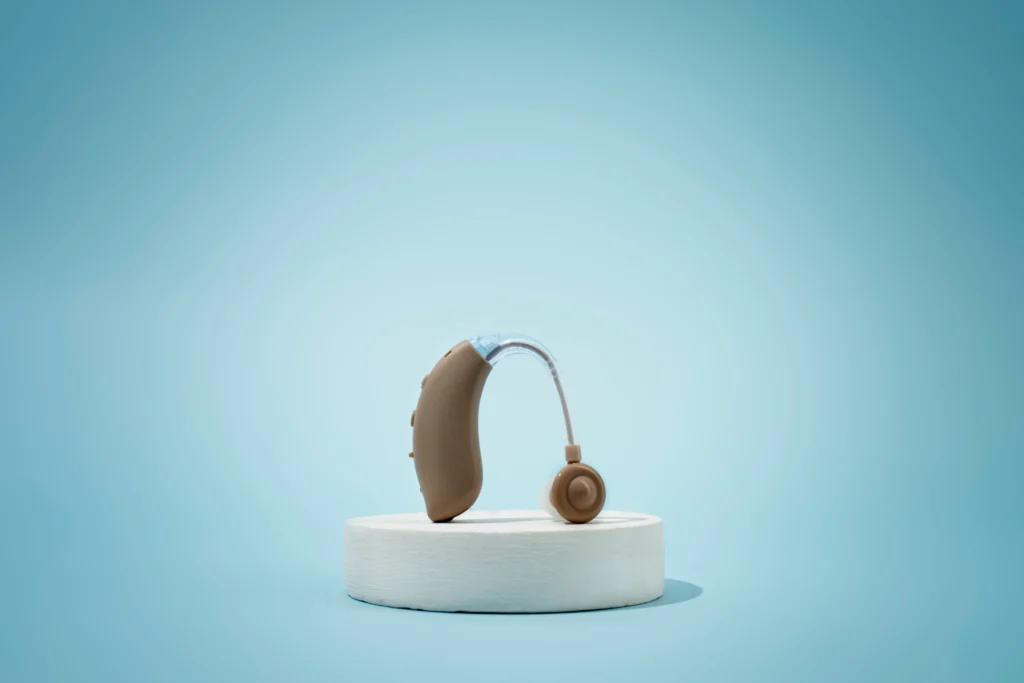Essential Hearing Aid Tips for Better Everyday Use

Essential Hearing Aid Tips for Better Everyday Use Introduction Selecting a hearing aid is a life-changing decision. For many people, the first thought is about hearing aid price in India, but the real value comes from how well the device fits your needs, lifestyle, and comfort. Modern hearing aids are not just amplifiers. They are smart devices designed with advanced features that make everyday conversations, work, and social life easier. In this guide, let’s look at what truly matters when choosing a hearing aid from types and features to long-term benefits. Getting Comfortable with Hearing Aids Adjusting to hearing aids is a gradual process that requires patience. Many first-time users expect instant clarity, but the brain needs time to adapt to amplified sounds. Start with Short Wearing Sessions Begin by wearing your hearing aids for two to three hours daily. Slowly increase the duration each week until you feel comfortable using them all day. This step helps your brain relearn how to interpret everyday sounds. Choose the Right Environment At first, practice wearing your devices in quiet settings like your living room. Once you feel confident, try busier environments such as grocery stores or restaurants. This gradual exposure trains your brain to separate important sounds from background noise. Daily Care and Maintenance Taking care of hearing aids is just as important as wearing them. Proper maintenance prevents damage and ensures the device delivers clear sound every day. Keep Hearing Aids Clean Earwax buildup and dirt can block microphones or receivers. Gently wipe your devices with a dry, lint-free cloth after every use. Use a cleaning brush provided by your audiologist for deeper cleaning. Protect from Moisture Water and electronics never mix. Always remove your devices before showering, swimming, or using hair sprays. For added protection, consider storing them in a hearing aid dehumidifier overnight to remove moisture. Change Batteries or Charge Regularly Depending on the type of hearing aid you own, either replace disposable batteries every few days or fully charge rechargeable models overnight. Low power can distort sound or cause interruptions during important conversations. Adjusting to Everyday Situations Daily life comes with different listening challenges, but the right hearing aid tips can help you navigate them smoothly. Telephone Use with Hearing Aids Telephones can sometimes cause whistling or feedback. To avoid this, hold the receiver slightly above your ear rather than pressing it directly against the device. If your hearing aid supports Bluetooth, connect it directly to your smartphone for clearer conversations. Social Settings and Group Conversations Large gatherings may seem overwhelming, especially in the beginning. Focus on one speaker at a time, choose seating where lighting is good for lip-reading, and politely ask others to speak clearly without shouting. Long-Term Hearing Aid Care Over time, your hearing aids will require adjustments and regular servicing to keep them in top condition. Long-term care is key to maximizing performance. Schedule Regular Check-ups Your hearing needs may change over time. Routine visits to your audiologist allow for device tuning, software updates, and checks for wear and tear. Upgrade When Necessary Hearing aid technology evolves rapidly. Upgrading ensures access to features like noise reduction filters, AI-assisted sound processing, and wireless streaming. A modern device can dramatically improve your hearing experience. Lifestyle Habits to Support Hearing Aid Use Lifestyle adjustments can significantly improve the comfort and functionality of hearing aids. Manage Noise Exposure Even with hearing aids, avoid prolonged exposure to loud environments. Using noise-canceling headphones or earplugs when necessary protects your hearing from further damage. Practice Listening Exercises Train your brain by practicing focused listening. For example, listen to audiobooks or podcasts while reading along with the text. This sharpens your ability to recognize speech patterns and adjust to amplified sounds. Why Choose Auritron When it comes to reliable hearing solutions, Auritron stands out for its innovation and customer-first approach. Auritron offers: Advanced Technology: Devices designed with cutting-edge features like Bluetooth connectivity and superior noise management. Personalized Fitting: Every ear is unique, and Auritron ensures a comfortable, custom fit for better performance. Trusted Support: From the first fitting to long-term care, Auritron provides continuous guidance Durability: Built with quality materials that withstand daily use while maintaining sound clarity. Choosing Auritron means choosing reliability, comfort, and enhanced quality of life. FAQs on Choosing the Best Hearing Aid in India How long does it take to adjust to hearing aids? Most people adapt within 2–4 weeks, though adjustment time varies depending on hearing loss and daily use. Can I use hearing aids while exercising? Yes, but it’s best to use protective covers to shield them from sweat and moisture. How often should hearing aid batteries be replaced? Disposable batteries usually last 3–7 days, while rechargeable devices need daily charging. What should I avoid when using hearing aids? Avoid exposing them to water, heat, and harsh cleaning products. Always store them safely when not in use. Do hearing aids need software updates? Yes, modern hearing aids often include software that can be updated during routine check-ups for improved performance. Conclusion Wearing hearing aids is a journey that blends patience, care, and adaptation. By following these hearing aid tips, you can make the process easier, improve comfort, and enjoy clear communication in every setting. From daily cleaning routines to practicing in noisy environments, each step builds confidence in your hearing journey. Auritron is committed to supporting you every step of the way, ensuring you always hear life at its best. +91 9892232702 +91 2247511219
How Hearing Aid Works | Complete Guide to Hearing Devices

Hearing Aid Advantages and Disadvantages Hearing plays a vital role in how we connect, communicate, and experience life. Unfortunately, millions of people face hearing challenges due to age, noise exposure, or medical conditions. For them, hearing aids are life-changing devices. Knowing how hearing aid works not only builds awareness but also helps in making better decisions when choosing the right device. Hearing aids are life-changing devices for people with hearing loss. They amplify sound, improve communication, and make daily life more engaging. But like any technology, they come with both strengths and drawbacks. This article explores the hearing aid advantages and disadvantages in detail, helping you evaluate whether they are the right choice for your lifestyle and needs. The Basics of How Hearing Aid Works A hearing aid is designed to amplify sounds and make them clearer, particularly speech. It doesn’t cure hearing loss but makes listening easier in both quiet and noisy situations. Sound is captured through the microphon The device converts the sound into a digital signal. The signal is amplified and adjusted according to the user’s hearing profile. The receiver sends the improved sound into the ear canal. This streamlined process makes it possible for someone with hearing difficulties to engage confidently in conversations, meetings, and social interactions. Components Involved in How Hearing Aid Works The smooth function of hearing aids depends on different parts working together. Microphone The microphone collects sound waves from the environment and converts them into electrical signals. Without this step, how hearing aid works would not even begin. Amplifier Once the signals are collected, they need to be strengthened. The amplifier boosts the sound and adjusts volume levels to ensure clarity even in challenging environments. Receiver The receiver acts like a small speaker. It delivers the processed, amplified sound into the ear canal so that the brain can interpret it as speech or environmental sounds. Power Source Every electronic device needs power. Hearing aids typically run on small disposable or rechargeable batteries, which keep the entire system functioning. Digital Signal Processor (DSP) This is where the real magic happens in modern hearing aids. The DSP analyzes incoming sounds, reduces unwanted background noise, and highlights speech frequencies. This advanced technology is key to how hearing aid works in today’s devices. The Technology Behind How Hearing Aid Works Earlier, hearing aids were analog and provided basic amplification. Today, digital hearing aids have revolutionized the experience. When sound enters the microphone, it is converted into a digital code. The DSP then processes this code, removes noise, and amplifies only the necessary frequencies. This allows users to hear speech clearly without being overwhelmed by background noise. Some modern devices even connect to smartphones and televisions, allowing seamless streaming of calls and media. This connectivity demonstrates how far how hearing aid works has advanced in recent years. Types of Hearing Aids and Their Working Different people require different solutions. While the principle of how hearing aid works is the same across devices, the design and comfort vary. Behind-the-Ear (BTE) Placed behind the ear, connected to an earmold. These bte hearing aids are durable and suitable for moderate to severe hearing loss. In-the-Ear (ITE) Custom-fitted into the outer ear, they are less visible but still powerful. In-the-Canal (ITC) and Completely-in-Canal (CIC) These smaller devices fit partially or fully into the canal, making them discreet but less powerful for severe hearing loss. Receiver-in-Canal (RIC) A mix of power and comfort, the RIC hearing aid places the receiver directly inside the ear canal, providing clear and natural sound quality. This design ensures better sound delivery with less distortion, making it a popular choice for many users. No matter the style, the core principle of how hearing aid works remains unchanged. Daily Life Impact of How Hearing Aid Works Improved Communication: Easier conversations at home, work, and social gatherings. Safety Awareness: Hearing alarms, traffic sounds, or warning signals in real time. Cognitive Benefits: Studies suggest better hearing reduces the risk of memory decline. Emotional Well-being: Clear hearing reduces frustration and increases confidence. By knowing how hearing aid works, individuals appreciate the difference these small devices can bring to everyday living. Maintenance and Care for Effective Functioning Understanding how hearing aid works also involves learning about maintenance. Proper care ensures long-lasting performance: Clean the device regularly to prevent earwax buildup. Keep it dry to avoid moisture damage. Charge or replace batteries as needed. Schedule professional servicing when necessary. Well-maintained devices not only last longer but also deliver consistent sound quality. Why Choose Auritron Auritron is dedicated to offering advanced hearing solutions designed with both technology and comfort in mind. Cutting-Edge Technology: Devices equipped with modern DSP for crystal-clear hearing. Personalized Fit: Solutions tailored to different degrees of hearing loss. User-Friendly Design: Lightweight, discreet, and comfortable for daily wear. Trusted Support: Reliable customer assistance and aftercare services. Choosing Auritron means investing in both innovation and care. FAQs What is the basic process of how hearing aid works? A hearing aid collects sound through a microphone, processes it digitally, amplifies it, and delivers it through a receiver into the ear. Do hearing aids restore normal hearing? No, they don’t restore natural hearing but improve sound clarity and speech understanding. Which type of hearing aid is right for me? The choice depends on hearing loss severity, lifestyle, and comfort. Options include BTE, ITE, ITC, CIC, and RIC. Are there rechargeable hearing aids? Yes, there are rechargeable hearing aids infact many modern devices are rechargeable, offering convenience and long battery life. How long does it take to adapt to a new hearing aid? It usually takes a few weeks of consistent use for the brain to adjust to processed sounds. Can hearing aids connect to smartphones? Yes, advanced devices allow Bluetooth connectivity for calls, music, and television streaming. Conclusion The science of how hearing aid works demonstrates how technology can restore communication and confidence. From capturing sound through a microphone to refining it digitally and amplifying it through a receiver, the process is seamless yet
Hearing Aid Advantages and Disadvantages

Hearing Aid Advantages and Disadvantages Hearing aids are life-changing devices for people with hearing loss. They amplify sound, improve communication, and make daily life more engaging. But like any technology, they come with both strengths and drawbacks. This article explores the hearing aid advantages and disadvantages in detail, helping you evaluate whether they are the right choice for your lifestyle and needs. Introduction to Hearing Aids Hearing aids are small, discreet electronic devices designed to improve hearing by amplifying sound. They consist of three main components: a microphone, amplifier, and a speaker. The microphone picks up sounds, the amplifier processes them, and the speaker delivers the adjusted sound into the ear. Modern devices are far more advanced than the bulky models of the past. Today, they feature sleek designs, wireless connectivity, and smart technology. Despite this progress, hearing aids are not without challenges. It is important to evaluate both the hearing aid advantages and disadvantages before investing in them.For many, the benefits outweigh the limitations, but personal circumstances such as budget, lifestyle, and type of hearing loss play a major role. Advantages of Hearing Aids Improved Hearing in Daily Life The greatest benefit of hearing aids is clear sound amplification. Users experience better speech clarity, reduced strain in conversations, and improved environmental awareness. For instance, individuals often report being able to hear birds chirping again, enjoy music, and follow conversations in meetings or family gatherings. This return of sound enriches life, restoring independence and confidence. Even small tasks like hearing doorbells, alarms, or traffic signals become easier and safer with the help of hearing aids. Enhanced Communication and Social Confidence Hearing loss often leads to feelings of isolation. Many people avoid social interactions due to embarrassment or frustration in not hearing properly. With hearing aids, users regain the ability to participate actively in conversations without repeatedly asking others to speak louder. This improved communication builds stronger relationships, reduces stress, and increases self-esteem. In professional settings, being able to follow meetings and phone calls smoothly also contributes to career confidence and productivity. Modern Features and Technology Benefits Hearing aids today are equipped with advanced features that make them convenient and user-friendly. Some of the most valuable include: Bluetooth connectivity for streaming audio directly from smartphones or TVs. Directional microphones that help focus on voices while minimizing background noise. Rechargeable batteries that eliminate the hassle of frequent replacements. Noise reduction and feedback cancellation for clearer sound. These features make hearing aids not just medical devices but also lifestyle-enhancing tools. For younger users or tech enthusiasts, such innovations improve adaptability and daily convenience. Disadvantages of Hearing Aids Cost and Maintenance Challenges One of the biggest disadvantages is the high cost. A good-quality pair of hearing aids can range from tens of thousands to even lakhs of rupees depending on the brand and technology level. Beyond the purchase price, there are ongoing costs for batteries, servicing, cleaning, and occasional repairs. Insurance coverage may be limited, and not everyone can afford the recurring expenses. This financial factor remains a barrier for many who could otherwise benefit from hearing aids. Physical Comfort and Adjustment Issues Adapting to hearing aids is not always easy. Some users feel discomfort in the ear canal, especially in the initial weeks of use. There may be irritation, a sense of fullness, or feedback noises until adjustments are made. Additionally, the brain needs time to adapt to amplified sounds. For some, this adjustment period can take weeks or months. Those expecting instant results may feel discouraged during this phase. Choosing the right style and getting a proper fitting from an audiologist can help reduce these challenges. Limitations in Noisy Environments While hearing aids improve hearing in many settings, they are not perfect in noisy environments. In crowded restaurants, traffic-heavy streets, or large gatherings, background noise can interfere with speech clarity. Although modern models use noise reduction technology, they cannot always separate every voice from environmental sounds. This limitation can be frustrating, particularly for individuals who socialize frequently in noisy places. Factors to Consider Before Choosing a Hearing Aid Before buying, several factors should be taken into account: Type of Hearing Loss: Different models are suited for mild, moderate, or severe conditions. Lifestyle Needs: Active people may prefer robust, water-resistant devices with advanced features. Budget Considerations: Balancing cost with essential features is critical. Comfort and Design: Behind-the-ear, in-the-ear, or completely-in-canal styles offer different levels of discretion and comfort. After-Sales Support: Availability of servicing, warranties, and audiologist support plays a big role in satisfaction. Taking time to evaluate these factors ensures that the chosen device meets long-term expectations. Why Choose Auritron? At Auritron, we believe better hearing means better living. We provide advanced hearing solutions designed to match individual needs, budgets, and lifestyles. Reasons to choose Auritron include: Wide range of hearing aids with the latest technology. Affordable options without compromising on quality. Professional guidance to select the right device for your hearing loss. Reliable after-sales service, including repairs, tuning, and maintenance. Commitment to improving quality of life through innovative solutions. Auritron is not just a provider of hearing aids but a trusted partner in your hearing journey. With our support, adapting to hearing aids becomes smoother, and long-term satisfaction is assured. FAQs on Choosing the Best Hearing Aid in India Are hearing aids worth the investment? Yes. For most people, the ability to hear conversations clearly and stay socially active makes them highly valuable. Do hearing aids completely restore hearing? No. They improve hearing significantly but cannot fully replicate natural hearing. How long does it take to adjust to hearing aids? Most users adapt within a few weeks, though the period varies by individual and device type. Conclusion Hearing aids bring significant improvements to daily living by restoring sound and enhancing communication. Yes, they come with certain drawbacks such as cost, maintenance, and limitations in noisy environments. However, these disadvantages are small compared to the life-changing benefits they provide. Recognizing the hearing aid advantages and disadvantages allows individuals to set realistic expectations.
